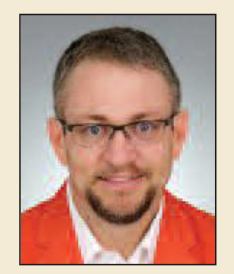April 29/May 6, 2019: Volume 34, Issue 24
By Jason Spangler
 When installing finished flooring materials over concrete, general contractors on a tight construction schedule often face a catch-22 situation. They know a concrete slab needs to be sufficiently dry before installation, but they also realize the drying process can be a slow-moving affair.
When installing finished flooring materials over concrete, general contractors on a tight construction schedule often face a catch-22 situation. They know a concrete slab needs to be sufficiently dry before installation, but they also realize the drying process can be a slow-moving affair.
Due to schedule pressures, finished floor surfaces are sometimes installed when concrete is too wet—often resulting in flooring failures, costly repairs and even legal action. Fortunately, several options are available to speed up the drying process.
Use the right mix. The more water you put in a concrete mix, the more must come out. If the mix has a high water-cement ratio, it produces more capillaries for moisture to exit quickly. But since more water must leave, the concrete takes longer to dry.
On the other hand, concrete with a low water-cement ratio has fewer capillaries to transport moisture to the surface. This not only delays drying time but also causes cracks to appear in the floor once the concrete dries. Desiccation agents or synthetic aggregate substitutes may help reduce the initial water content, but each comes with the risk for cracking or shrinking. Other admixtures such as silica fume work well, but their higher cost may outweigh the benefits.
Trowel with care. Avoid slick, hard-troweled finishes as they can actually seal the surface of the concrete and prevent moisture from escaping. Using a high blade angle, high blade speed or attempting to burnish too quickly can also have the same effect. Rushing the troweling will increase drying time.
Manage ambient conditions. Managing the ambient conditions surrounding the concrete slab can also helps speed up the drying process. These conditions include:
Air temperature—Warmer temperatures hold more moisture vapor than cold air and can speed up drying.
Airflow—Evaporated moisture often resettles on the surface of the slab. Using dehumidification equipment to extract moisture out of the air allows for a continuous drying cycle.
Relative humidity (RH)—When the air outside the slab has a low RH, more moisture can escape to speed up drying. When the RH outside is higher than the internal RH, the concrete may reabsorb moisture and slow down drying.
Dehumidification. Three dehumidification processes are available to accelerate drying. First,the condensation process uses cooling-based dehumidifiers to cool air and drop the dew point so moisture can be collected and drawn away. Second, the heating process raises the dew point of the surrounding air so it can absorb more moisture from the surface and send it through a collection system. Third, desiccant drying involves moving humid air across a desiccant material that binds and holds the moisture before venting it away.
Mitigation system. A last-ditch effort to speed up a slab’s readiness entails using a mitigation system. These types of products encapsulate the moisture in the slab, allowing amounts of moisture to escape that won’t negatively impact the installed flooring finish.
Concrete moisture testing. While these drying measures can help speed up the drying process, at some point you must measure the slab’s current moisture condition. The only accurate way to assess a slab’s overall moisture condition is to test below the surface of the slab.
Jason Spangler is the flooring division manager for Wagner Meters. He has more than 25 years’ experience in sales and sales management across a broad spectrum of industries.
